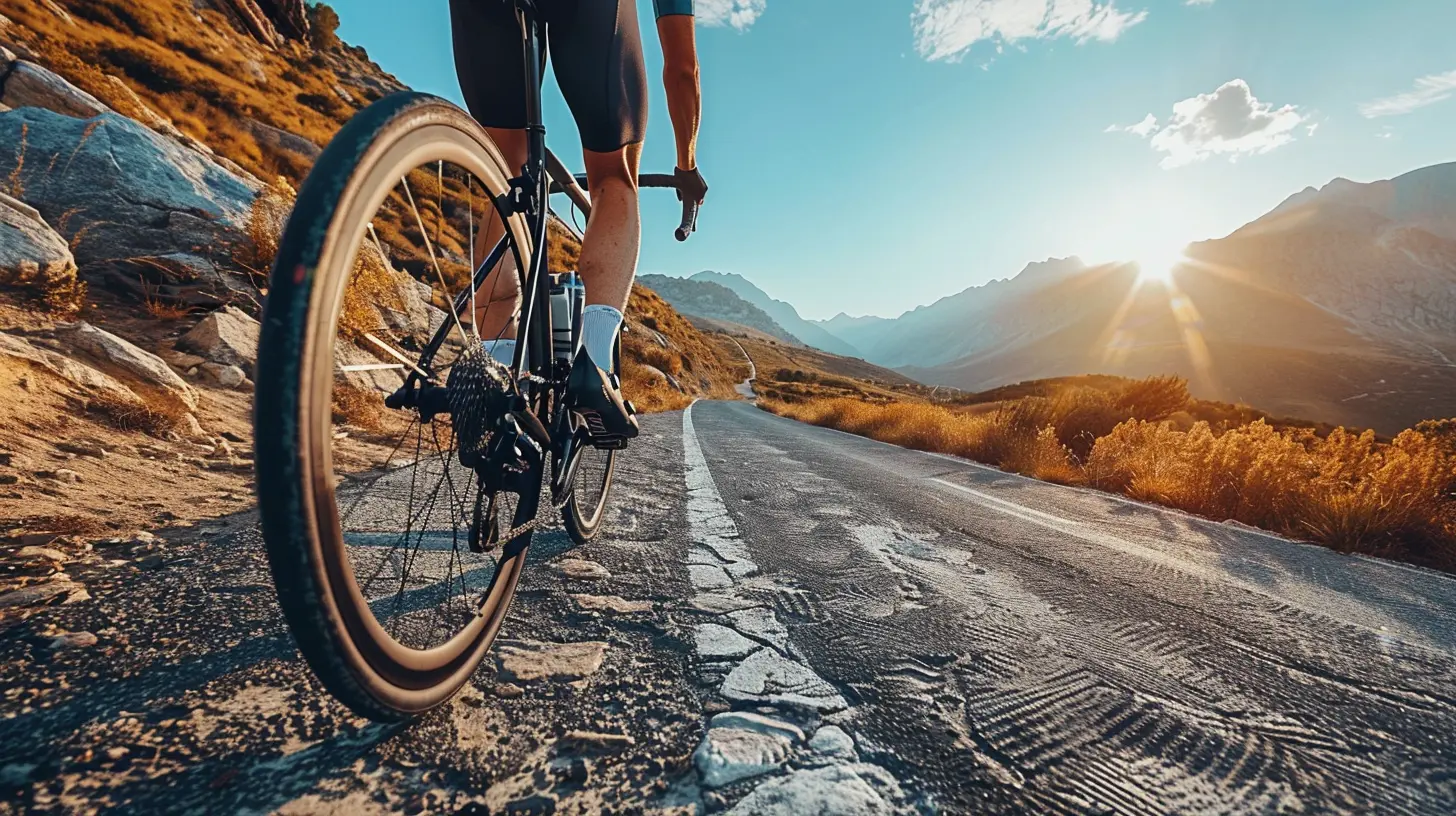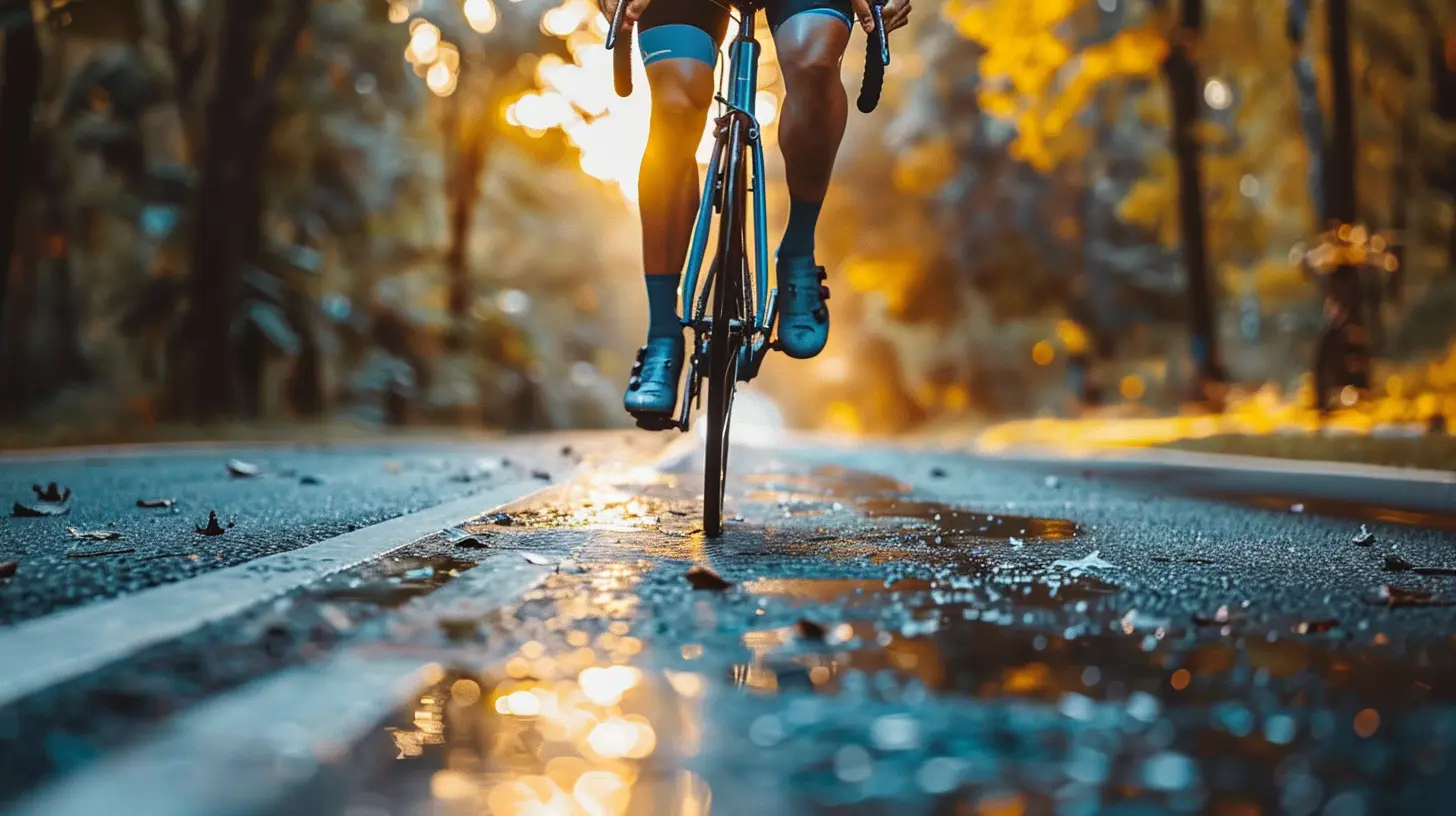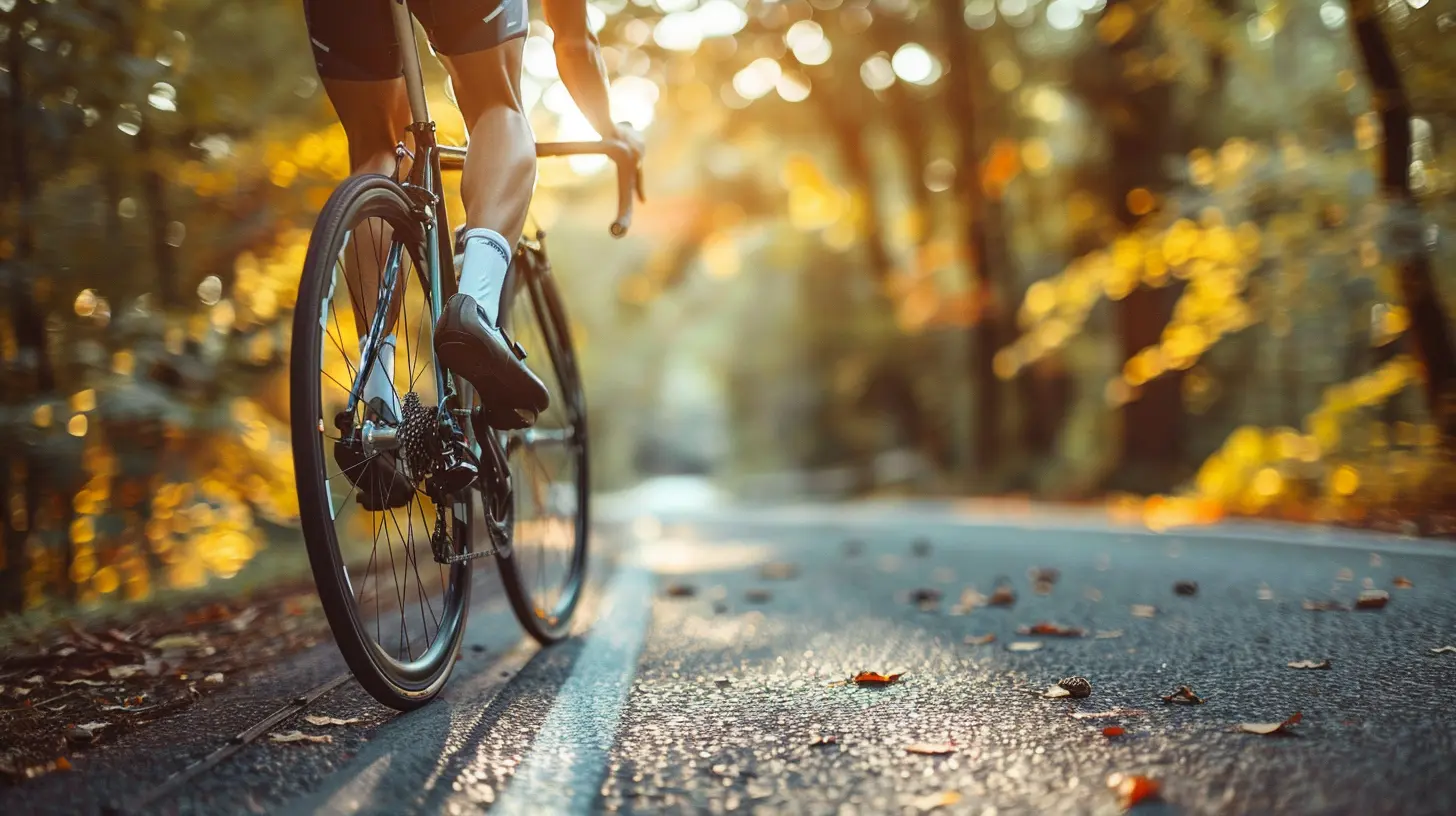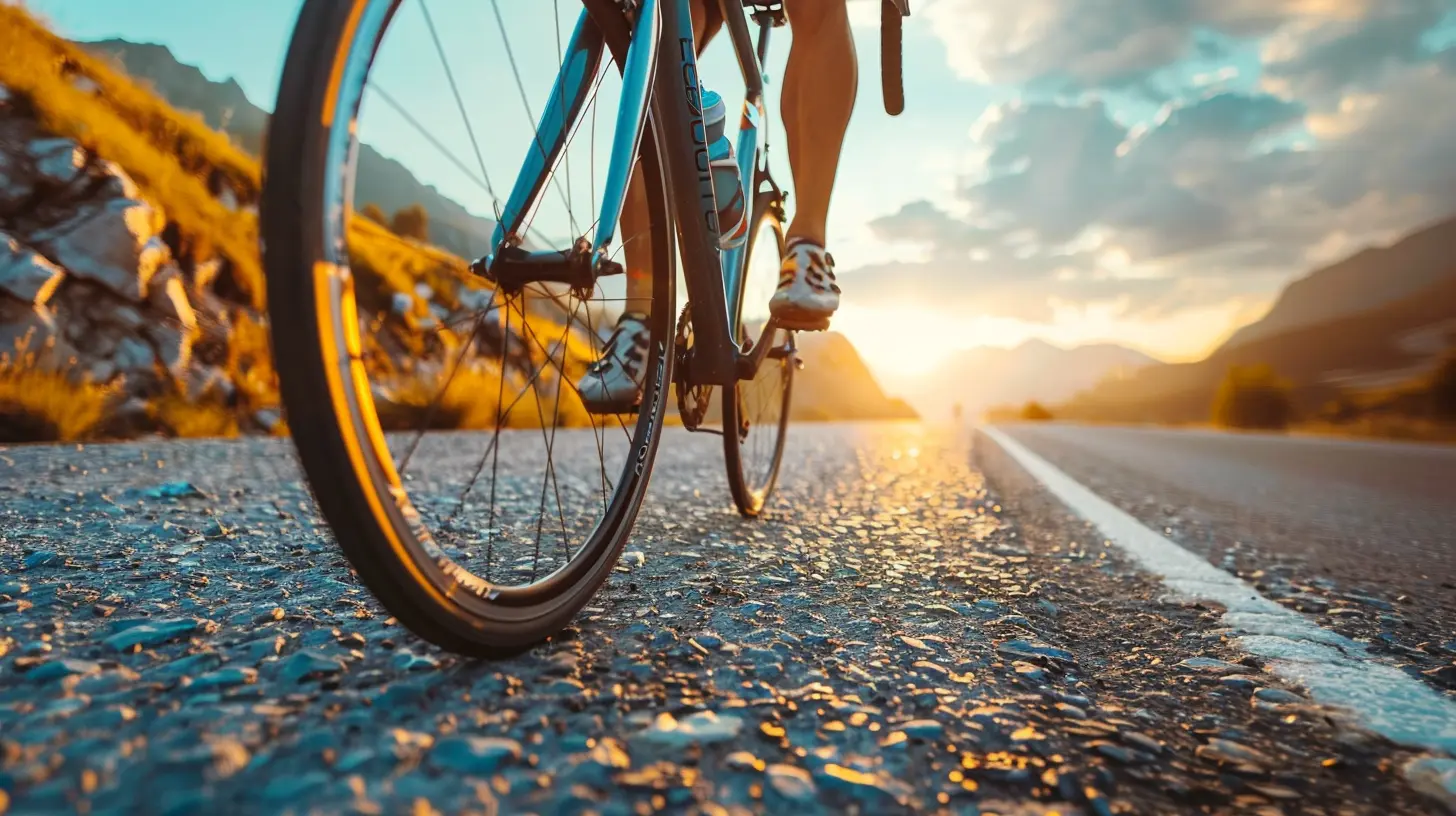Understanding and Using Cadence to Improve Your Cycling
15 May 2025
When it comes to cycling performance, most riders focus on speed, endurance, and power. But there’s one key factor that often gets overlooked—cadence. If you've ever wondered why some cyclists seem to pedal effortlessly while others struggle, the answer often lies in their cadence.
So, what exactly is cadence, and how can you use it to improve your cycling? Stick with me because we’re about to break it all down in a way that makes sense.

What Is Cycling Cadence?
Cadence refers to the number of revolutions per minute (RPM) your pedals make. Simply put, it's how fast you spin your legs while cycling.Think of it like gear shifting in a car. A high cadence is like cruising in a lower gear—your engine (legs) moves faster, but there's less strain. A low cadence, on the other hand, is like pushing hard in a high gear—your legs turn slower, but they work harder.
Getting your cadence right can mean the difference between riding efficiently and wasting unnecessary energy. 
Why Cadence Matters
Cadence isn't just about pedaling speed; it affects your overall cycling efficiency and fatigue levels. Here’s why it’s crucial:1. Prevents Muscle Fatigue – A higher cadence (90+ RPM) reduces strain on your leg muscles, preventing early fatigue. Instead, more of the work shifts to your cardiovascular system, which is generally more efficient at handling endurance efforts.
2. Improves Endurance – Riding at the right cadence helps conserve energy, allowing you to cycle longer without tiring out too quickly.
3. Prevents Joint and Muscle Strain – Grinding a low cadence in a high gear puts excessive stress on your knees and muscles, increasing the risk of injury.
4. Optimizes Speed and Power – Efficient cadence ensures you maintain steady power output without burning out too fast.
So, if your goal is to cycle farther, faster, and with less effort, understanding cadence is a game-changer. 
What Is the Ideal Cadence for Cycling?
There isn’t a one-size-fits-all answer because the optimal cadence varies depending on the rider and the type of cycling. However, here’s a general guideline:- Beginner Cyclists: 60-80 RPM
- Recreational Riders: 80-90 RPM
- Competitive Cyclists: 90-110 RPM
For most cyclists, staying between 80-100 RPM is considered the sweet spot. It balances efficiency and power, allowing for smooth pedaling without excessive strain.
However, cadence also depends on factors like terrain, fitness level, and riding style. 
High vs. Low Cadence: Which One Is Better?
Let’s break it down:High Cadence (90+ RPM)
✅ Reduces muscle fatigue✅ Shifts more workload to the cardiovascular system
✅ Helps maintain endurance for long-distance cycling
🚨 Drawback: Requires good cardiovascular fitness to sustain a high cadence efficiently.
Low Cadence (Below 80 RPM)
✅ Allows for powerful pedal strokes✅ Useful for short bursts of power (e.g., climbing steep hills)
🚨 Drawback: Increases strain on your muscles and joints, leading to quicker fatigue.
So, which one should you focus on? The answer is both! Being able to switch between high and low cadence depending on the terrain and effort level is what separates great cyclists from average ones.
How to Improve Your Cadence
If you’re ready to fine-tune your cadence and take your cycling to the next level, here’s a step-by-step guide:1. Measure Your Current Cadence
Before you start making adjustments, you need to know where you stand. You can do this in two ways:- Use a Cadence Sensor – Most cycling computers and smartwatches come with cadence sensors that track your RPM in real time.
- Manual Count Method – Watch your right leg and count how many times it completes a full pedal revolution in 30 seconds. Multiply that number by two to get your cadence.
2. Practice Spinning Faster
If you tend to ride at a lower cadence (below 80 RPM), work on increasing it gradually. Here’s how:- Ride in an easier gear and consciously maintain a higher pedaling speed.
- Do cadence drills—spin at a high RPM (100-110) for 30-second intervals, then recover at your regular cadence.
- Focus on pedaling smoothly and efficiently rather than bouncing in the saddle.
3. Use Gears Strategically
One of the biggest mistakes cyclists make is staying in the wrong gear too long. Shift gears frequently to maintain an efficient cadence, especially when climbing or accelerating.4. Train with High-Cadence Workouts
Incorporate these cadence-focused workouts into your training:- Spin-Ups: Start at your normal cadence and gradually increase by 5-10 RPM every 30 seconds until you reach your max.
- High-Cadence Intervals: Ride at 100+ RPM for 1-2 minutes, then return to your natural cadence for recovery.
- Single-Leg Pedaling: Pedal with one leg at a time to improve smoothness and efficiency.
5. Strengthen Your Cardiovascular System
Since a higher cadence relies more on cardiovascular endurance, improving your aerobic fitness will allow you to maintain a faster spin without exhausting yourself. Activities like running, swimming, and HIIT training can help.6. Be Patient and Track Progress
Improving cadence doesn’t happen overnight. Track your RPM over time and aim for small, consistent improvements. The key is to find what feels most comfortable and sustainable for your riding style.Common Cadence Mistakes to Avoid
Cyclists often make these avoidable errors when working on cadence:⛔ Pushing Too Hard in a Big Gear – This leads to unnecessary muscle fatigue and knee strain. Always shift to maintain an efficient cadence.
⛔ Ignoring Cadence Altogether – Many beginners focus only on speed and power but neglect how efficiently they’re pedaling.
⛔ Bouncing in the Saddle – If you’re bouncing at high RPMs, your cadence is too high for your control level. Focus on smooth, controlled pedaling.
Final Thoughts
Cadence is one of the most powerful tools you can use to improve your cycling performance. Whether you’re a beginner or a seasoned rider, finding the right cadence for your riding style will make you more efficient, reduce fatigue, and help you ride longer and stronger.The key is balance—learning when to use a high cadence for endurance and a lower cadence for power. With practice, smart gear shifting, and cadence-focused training, you’ll be pedaling like a pro in no time!
So, next time you hit the road, pay attention to your cadence—your legs will thank you later!
all images in this post were generated using AI tools
Category:
Cycling FitnessAuthor:

Arthur McKeever
Discussion
rate this article
3 comments
Camille Fields
Great article! Understanding cadence can truly transform your cycling experience. It’s fascinating how small adjustments can lead to big improvements in performance and comfort. I’m excited to apply these tips on my next ride—happy cycling, everyone! 🚴♂️🌟
May 25, 2025 at 4:23 PM

Arthur McKeever
Thank you! I'm glad you found the article helpful. Enjoy your next ride and happy cycling! 🚴♂️🌟
Aubrey Brown
Cadence isn't just a number; it's your secret weapon! Stop spinning your wheels and start pedaling smart. Embrace the rhythm, and let your legs do the talking. Get in sync or get left behind!
May 21, 2025 at 2:41 PM

Arthur McKeever
Thanks for the insight! Embracing cadence truly enhances performance—it's all about finding that perfect rhythm. Let's pedal smart!
Lyra Abbott
“Cadence: the only time I willingly count to 90 while pedaling, just to avoid counting how many snacks I eat!”
May 18, 2025 at 3:08 PM

Arthur McKeever
Glad to see you're using cadence as a distraction! Balancing snacks and cycling is key—keep pedaling!



